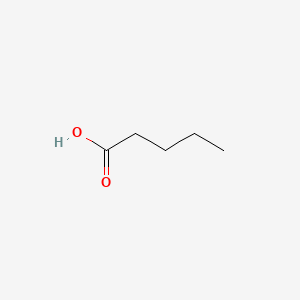
|
Valeric acid |
Valeric acid is a lipid of Fatty Acyls (FA) class. Valeric acid is associated with abnormalities such as Papillon-Lefevre Disease, Obesity, Diabetes Mellitus, Non-Insulin-Dependent and Dehydration. The involved functions are known as Process, Odorant, Stimulus, Irritation and Phenomenon. Valeric acid often locates in Receptive field, soluble, Extracellular, Entire gastrointestinal tract and Body tissue. The associated genes with Valeric acid are Orthologous Gene, Fusion Gene and AS gene. The related lipids are Valerates, butyrate, Propionate, Caproates and Palmitates. |
838 |
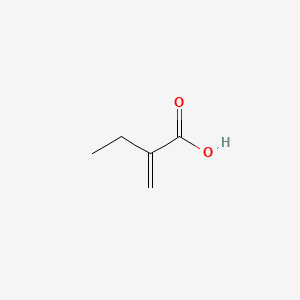
|
2-Ethylacrylic acid |
2-Ethylacrylic acid is a lipid of Fatty Acyls (FA) class. The involved functions are known as hemolysis. |
869 |
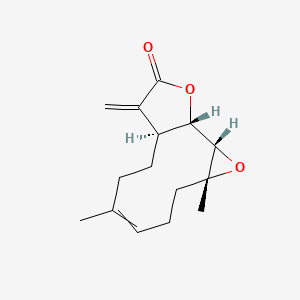
|
Parthenolide |
Parthenolide is a lipid of Prenol Lipids (PR) class. Parthenolide is associated with abnormalities such as Migraine Disorders, abnormal fragmented structure, Hyperostosis, Diffuse Idiopathic Skeletal, Consumption-archaic term for TB and Infection. The involved functions are known as Apoptosis, Cell Proliferation, Inflammation, pathologic cytolysis and Membrane Potentials. Parthenolide often locates in Mitochondria, Tissue membrane, Cytoplasmic matrix, Cytoplasm and Body tissue. The associated genes with Parthenolide are IGKJ1 gene, BCL2 gene, DDIT3 gene, Procaspase 7 and GAPDH gene. The related lipids are A(2)C. The related experimental models are Mouse Model, Xenograft Model, Breast Cancer Model and Cancer Model. |
925 |
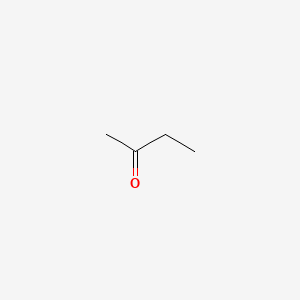
|
2-butanone |
2-butanone is a lipid of Fatty Acyls (FA) class. |
1159 |
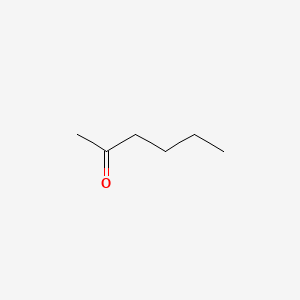
|
2-hexanone |
2-hexanone is a lipid of Fatty Acyls (FA) class. 2-hexanone is associated with abnormalities such as Virus Diseases, Egg drop syndrome, Senile Plaques, Chronic Obstructive Airway Disease and COPD exacerbation. The involved functions are known as Permissiveness, Biological Function, Synthesis, Tropism, Amplification and Cellular Tropism. 2-hexanone often locates in Vertex, viral capsid, Tissue fiber, Cell surface and host. The associated genes with 2-hexanone are Polylysine, Fusion Protein, Genome, Lac Gene and chimeric gene. The related lipids are Promega, Lipopolysaccharides, oligofectamine, Propionate and FuGene. The related experimental models are Transgenic Model, Xenograft Model and Rodent Model. |
1204 |
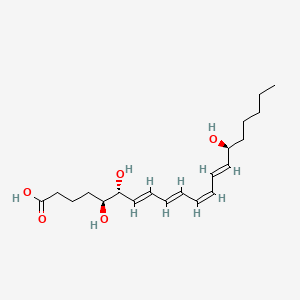
|
Lipoxin A4 |
Lipoxin a4 is a lipid of Fatty Acyls (FA) class. Lipoxin a4 is associated with abnormalities such as Asthma, Cystic Fibrosis, Pneumonia, Obesity and Septicemia. The involved functions are known as Inflammation, Signal, Signal Transduction, Regulation and Metabolic Inhibition. Lipoxin a4 often locates in Immune system, Blood, soluble, Extracellular and Splenic Tissue. The associated genes with Lipoxin A4 are FPR2 gene, Homologous Gene, SAA1 gene, Trp-Lys-Tyr-Met-Val-Met and Annexin 1. The related lipids are Steroids. The related experimental models are Knock-out. |
1240 |
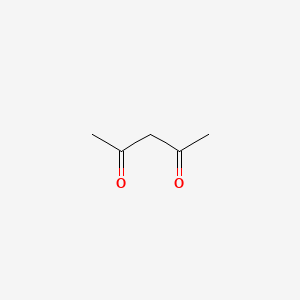
|
2,4-pentanedione |
2,4-pentanedione is a lipid of Fatty Acyls (FA) class. The related lipids are Butyrates. |
1440 |

|
hesperidin |
(2S)-5-hydroxy-2-(3-hydroxy-4-methoxyphenyl)-4-oxo-3,4-dihydro-2H-chromen-7-yl 6-O-(6-deoxyhexopyranosyl)hexopyranoside is a lipid of Polyketides (PK) class. (2s)-5-hydroxy-2-(3-hydroxy-4-methoxyphenyl)-4-oxo-3,4-dihydro-2h-chromen-7-yl 6-o-(6-deoxyhexopyranosyl)hexopyranoside is associated with abnormalities such as Osteoporosis, Postmenopausal, estrogen deficiency, Chronic venous insufficiency, Neurodegenerative Disorders and Cerebrovascular accident. The involved functions are known as Sweetening Agents, Vmax, enzyme activity, Fermentation and Regulation. (2s)-5-hydroxy-2-(3-hydroxy-4-methoxyphenyl)-4-oxo-3,4-dihydro-2h-chromen-7-yl 6-o-(6-deoxyhexopyranosyl)hexopyranoside often locates in Entire gastrointestinal tract, soluble, Entire bony skeleton, Trabecular substance of bone and Blood. The associated genes with (2S)-5-hydroxy-2-(3-hydroxy-4-methoxyphenyl)-4-oxo-3,4-dihydro-2H-chromen-7-yl 6-O-(6-deoxyhexopyranosyl)hexopyranoside are MTPN gene, GLUCOSIDASE, STN gene, SLC33A1 gene and GHRL gene. The related lipids are Total cholesterol and blood lipid. The related experimental models are Arthritis, Collagen-Induced. |
1455 |

|
Heptane |
Heptane is a lipid of Fatty Acyls (FA) class. The involved functions are known as cell activation and Synthesis. Heptane often locates in immunological synapse. |
1600 |
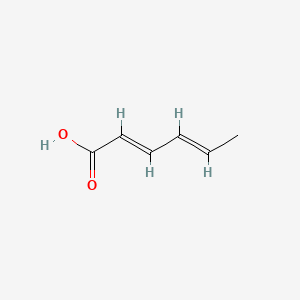
|
Sorbic acid |
Sorbic acid is a lipid of Fatty Acyls (FA) class. Sorbic acid is associated with abnormalities such as Consumption-archaic term for TB and Vitelliform dystrophy. The involved functions are known as Biochemical Pathway, Anabolism, Oxidation, Cell physiology and Signal. Sorbic acid often locates in Cytoplasmic matrix, Mitochondria, Vacuole, Mitochondrial Membranes and Mitochondrial matrix. The associated genes with Sorbic acid are Genome, Homologous Gene, P4HTM gene, IMPACT gene and LGALS1 gene. The related lipids are Sterols, Sphingolipids, Membrane Lipids, Propionate and Hexanols. |
1650 |









